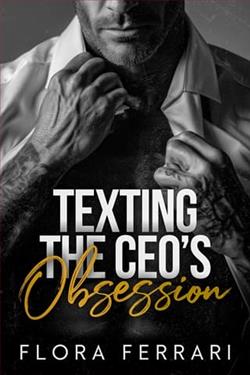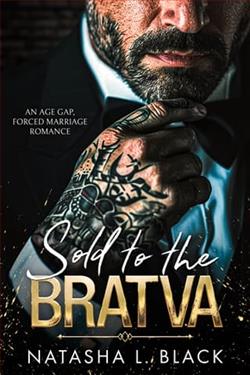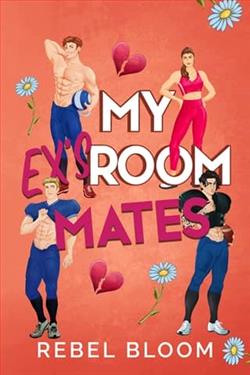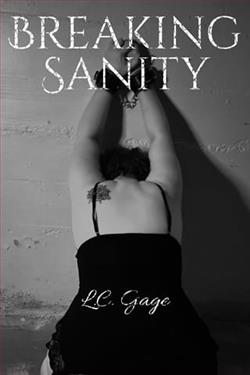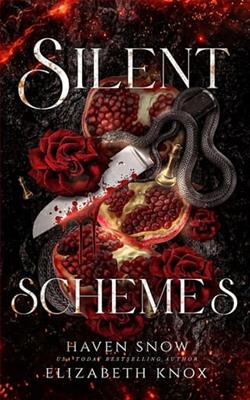Page 37 of Beautiful Lies
“What’s a hoodlum?” the kid asked, his brow furrowed.
“It’s a kid from the wrong side of the tracks,” Connor said. “They usually turn into junkies. You don’t want to mix with those kinds of people.”
The father wrangled his kids out of the restaurant, but the mother stayed behind and stood by our table, hands on her hips, her glare aimed at Connor. “That was not necessary,” she hissed.
“I was trying to help your cause. You have a good day now, ma’am.” Connor gave her a mock-salute, with an insolent look on his face that I knew so well. It was the same one he’d used at school whenever the teachers had disciplined him. It made him look like trouble and had never done him any favors.
After the woman left, he leaned back in his seat and crossed his arms, holding my gaze. He was waiting to see how I’d react. “How do you feel about hanging out with a …hoodlum?”
I decided to go with my first instinct. “They obviously don’t appreciate good art. They were pompous asses.”
He gave me a soft smile. “I like it when you’re on my side.”
“I used to always be on your side.”
“I know. I remember.”
A minor tussle ensued when the waiter delivered our check. “Let me pay half,” I insisted. “That’s what friends do.”
“Let the hoodlum pay.” Connor threw down enough cash to cover the check and a tip and dragged me out of the restaurant.
“But you’re starting a new business and—”
“Brunch won’t bankrupt me.”
“Thank you.”
“How about a guided tour of the Botanical Gardens?” he said, looking up the street.
“Who’s the guide?”
“Me.”
I probably knew the gardens better than he did, but I went along with it. He led me to the Japanese Hill-and-Pond Garden, my favorite part.
“Mr. Santos taught me how to look at a tree,” Connor said.
Mr. Santos was the only teacher Connor had respected. He helped Connor put together the portfolio that got him into Pratt Institute. Mr. Santos saw Connor’s potential. He encouraged him and built him up instead of trying to knock him down like the other teachers who treated Connor like a troublemaker in need of a firm hand and discipline.
“What do you mean … he taught you how to look at a tree?” I asked.
“A tree doesn’t float in space. It has roots and it’s firmly planted in the ground, so you need to show that when you sketch a tree. You want to feel the texture of the bark. Show the way the branches are attached to the trunk and the leaves to the branches. He told me to study the negative space between the branches. Branches are never straight. To give a tree life, you need to show the kinks and knots. The gnarled trunk. The shadows and the heavier weighted lines. Trees are so complex. They’re perfectly imperfect.”
I tried to look at the tree through the eyes of an artist like Connor did. When I’d first looked at this tree, I hadn’t seen its imperfections. All I’d seen was the tree’s beauty and elegance, the red-russet leaves in stark contrast with the dull gray sky. I hadn’t noticed the gnarled, twisted branches, the slightly-bent trunk or the roots pushing up from the ground.
Perfectly imperfect.Like Connor. Like me. Like us.
I glanced at Connor. He was watching my face, not the tree. He was putting down roots. He was shadows and light. Complex. Beautiful and damaged, but maybe … not beyond repair.
When he reached for my hand, I let him take it. As we walked around the gardens, talking and laughing, I pretended that we’d just met, and we were still in the getting-to-know-you phase. If that had been true, I would have said yes to another date because this guy … he was someone I wanted to know better.
10
Connor
“How did it go with Ava yesterday?” Tate asked as we walked out of our Monday morning meeting and up the street to our Harleys. Somehow, we managed to snag the same parking space every week, in front of a scraggly tree outside a weathered blue house, the paint chipped and peeling. An old couple sat on webbed lawn chairs next to the moss-covered birdbath in their tiny front yard fenced-off from the sidewalk by white latticed wrought-iron. The woman was wearing curlers in her hair, a housedress, and slippers. The man was dressed in a ratty white T-shirt and dress pants. They sat, staring into the distance, not talking. I turned my back to the house and Tate and I stood on the edge of the sidewalk, facing the street.
“It had its ups and downs,” I said, thinking about the silent brunch and our stilted conversation. But then she’d taken my side. And our walk through the Botanical Gardens had been… nice. We’d talked and laughed, and she’d let me hold her hand. “Mostly good though.” I shook a cigarette out of the pack and lit up.








